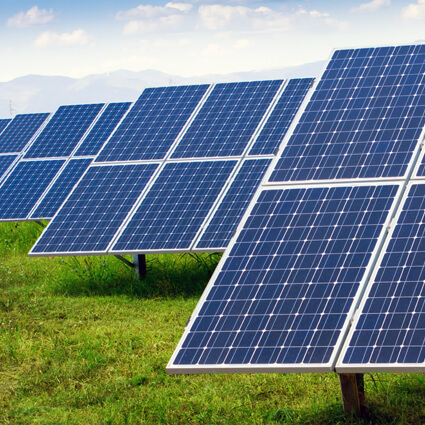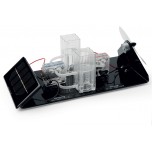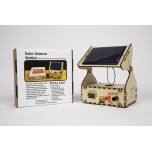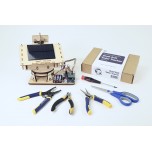 If you are considering the installation of a solar system (by yourself or by a solar company), there are several codes and regulations that need to be adhered to. These include the National Electrical Code (NEC), local permits, building codes, fire codes, and grounding systems. In addition, every component in a solar PV system should have a UL listing. This post briefly reviews these standards and requirements so that you can ask the right questions to your contractor or conduct further research into these standards online.
If you are considering the installation of a solar system (by yourself or by a solar company), there are several codes and regulations that need to be adhered to. These include the National Electrical Code (NEC), local permits, building codes, fire codes, and grounding systems. In addition, every component in a solar PV system should have a UL listing. This post briefly reviews these standards and requirements so that you can ask the right questions to your contractor or conduct further research into these standards online.
The National Electrical Code (NEC) has requirements for the installation of PV systems and most other electrical installations. The purpose of the code “is the practical safeguarding of persons and property from hazards arising from the use of electricity.” The NEC is adopted in all 50 U.S. states and U.S. territories and has been published every three years by the National Fire Protection Association (NFPA).
The NEC has nine chapters and Chapters 1 – 4 are general rules for all electrical installations and Chapters 5 – 7 apply to special conditions or equipment. Chapter 8 covers communication systems and Chapter 9 is tables that are referenced in the earlier chapters. Article 690 was the first solar article and was introduced to the NEC in 1984.
In 1984, Article 690 Solar Photovoltaic Systems was first introduced in the NEC. Significant modifications and amendments to Article 690 have been incorporated into subsequent editions. The 2014 NEC consists of several main parts such as circuit requirements, wiring methods, disconnect means, grounding, marking, connections, storage batteries, and systems over 1000 volts. There are also other applicable articles and when the requirements of Article 690 differ from the other Articles, then the requirements of Article 690 shall apply. Other applicable articles are:
• 110: Requirements for Electrical Installations
• 230: Services
• 240: Overcurrent Protection
• 250: Grounding and Bonding
• 300: Wiring Methods
• 310: Conductors for General Wiring
• 450: Transformers
• 480: Storage Batteries
• 705: Interconnected Electric Power Production Sources
A permit is usually required prior to the installation of a PV system and a system inspection is often required to ensure code compliance. The codes are enforced by the authority having jurisdiction (AHJ) which is a federal, state or local department or individual such as a fire chief; fire marshal; building official; electrical inspector; or others having statutory authority to enforce the Code requirements. The AHJ reviews plans, issues permits, and evaluates installations through a field inspection process. The AHJ interprets rules, decides on the approvals, and grants special permissions allowed by the NEC.
The NEC requires electrical equipment to be identified, labeled, or evaluated for safety. The AHJ will verify code compliance by examining the PV installation for safety. One is the easiest ways to have a code-compliant electrical installation is to adhere to product installation and use instructions included with products.
Underwriter’s Laboratory (UL) develops safety standards recognized by Nationally Recognizing Testing Laboratories (NRTL) and allows manufacturers to place UL listing marking on their products that have been tested to the appropriate standards. There is a UL listing standard for every component in a solar PV system. Some of these include:
• UL 1703: PV modules
• UL 1741: Converters, charge controllers and combiner boxes
• UL 2703: Racking systems
• UL 4703: Photovoltaic (PV) wire
• UL 2579: Photovoltaic systems
The listing labels also provide safety information and equipment specifications to size the equipment and wiring systems for the application. There are also other testing laboratories such as TUV, CSA and Intertek that evaluates electrical equipment to UL standards.
Building codes set the standards for structures to protect health, safety, and welfare. The codes apply to PV installations in terms of installations, materials, wind resistance, and fire classification. PV systems are required to pass a permitting and inspection process prior to installation and operation of the system. Building codes help to create uniformity during the inspection process. Most building codes are based upon the International Code Council’s model-building and residential codes. The International Residential Code applies to detached one and two-family dwellings and townhouses that are three stories or less. The International Residential Code and International Building Code require rack-mounted rooftop PV systems to be installed according to manufacturer’s instructions, the National Electrical Code and UnderWriter’s Laboratories product safety standards. The International Residential Code requires:
• Roof be structurally capable of supporting the load of modules and racking
• The modules and racking be non-combustible
• Roof or wall penetrations be sealed to prevent water, rodents, or insects from entry.
The International Building Code also:
• Requires rooftop solar systems to have the same fire classification as the roof assembly
• Establishes criteria for calculating the minimum design loads for rooftop solar PV systems
The codes are updated every three years, although states vary on when and if they adopt the updated codes.
Fire codes are designed to minimize the risk of fire, safety, and safeguard firefighters and other emergency responders. PV systems have special considerations for fire codes, such as tripping, structural collapse, fire spread, electrical shock and hazards related to battery storage systems. The International Fire Code (IFC) and National Fire Protection Association (NFPA) produce codes that have been adopted by AHJs in the United States.
Pathways and Spacing
When installing the PV systems, the installer must create enough work space for the installation and maintenance of the system [NEC 110.26]. In general, the clearances in front of equipment that may need to be serviced in an energized state must be at least 3 feet. The exact amount of feet is dependent upon the voltage and if live parts are on one or both sides of the working space. The width of working spaces should be the width of the equipment or 30 inches, whichever is wider. Smaller working spaces may be acceptable if the voltage is less than 60 V by permission of the AHJ.
Mitigate Electrical Hazards
Electrical hazards can cause personal injury or danger of fire. Electrical accidents are caused by unsafe installation, unsafe equipment, unsafe environment or unsafe work practices. The following can prevent electrical hazards on the job:
• Using properly grounded tools
• Work on circuits in a de-energized state
• Avoid power lines and buried conductors
• Use electrical hazard (EH) rated foot protection
• Wear non-conductive Class E hardhat
• Maintaining an orderly job site
When installing or servicing equipment, the appropriate safety gear should be used and a lockout and tagging process should be used. Extension cords that are used during installation or maintenance should be the 3-wire type (with ground) and designed for hard or extra-hard use.
Grounding of PV systems reduced the risk of electrical shock and the effects of lightning and surges on equipment. There are two types of grounding: system and equipment. System grounding connects a current-carrying conductor to ground. Equipment grounding connects non-current carrying metal parts to ground. Bonding is electrically connecting metal parts together so that they stay at the same voltage. All PV systems require equipment grounding, and some require system grounding.
System grounding is made at the supply source, such as a transformer or at the main service disconnecting means. Ungrounded systems should comply with 690.35 and two-wire and bipolar systems should be grounded or impedance grounded. Per NEC 690.42, the dc system grounding connection must be made at a single point on the PV output circuit. According to NEC 690.35, PV arrays are only allowed to have an ungrounded source and output circuits when the following conditions are met:
• Positive and negative ungrounded conductors must have a method of disconnecting and overcurrent protection (NEC 690.9)
• Round fault protection for all conductors must be provided
• Source and output circuit conductors should use jacketed multi-conductor cables, listed and labeled PV wire, direct-buried cables, and should be installed in raceways.
Inverters or charge controllers used with ungrounded arrays must be listed and identified for use with ungrounded arrays. Each junction box, disconnect or other device that be serviced with the following label:
Warning – Electric Shock Hazard
The direct current conductors of this photovoltaic power system are ungrounded but may be energized with respect to ground due to leakage paths and/or ground faults.
Equipment grounding is the connection of non-current carrying metal parts to ground. It requires electrical bonding of junction boxes, conduits, racks, enclosures and other metallic components. This ensures that the metal components will be at the same voltage level, which reduces the risk of electrical shock. Per NEC 250, 690.43, the installation of an equipment grounding conductor (EGC) is require for all metal framed PV module systems that has exposed conductors in contact with metal support structures, regardless of system voltage. ECGs must be installed in the same raceway as the PV circuit conductors and can be a conductor, busbar, metallic raceway or structural component.
PV module manufacturers are now required to provide details for equipment grounding in their installation instructions per the UL 1703 standard. While the methods of indoor grounding are plentiful in the electrical industry, there are not as many products designed for outdoor use. In addition, most of the industry uses stainless steel for wiring methods and support structures compared with aluminum in the PV industry. Grounding and bonding of steel is more straightforward than aluminum since connections are made by bolting and welding. Bolting of aluminum does not create effective bonding due to the natural oxidation layer that forms on aluminum or anodized layer that has been placed on the aluminum to prevent corrosion. For bolting to be effective, the non-conductive layer on the aluminum must be removed.
Battery systems are considered grounded when the PV power source is grounded. The NEC 690.71 does allow battery systems over 48 volts to not be grounded, but they have several requirements:
• Per NEC 690.35, the PV source and output circuits must have grounded current carrying conductor or meet the requirements for ungrounded arrays.
• The DC and AC load circuits must be grounded.
• The positive and negative ungrounded battery circuit conductor must have a switched disconnecting means and overcurrent protection.
• A ground-fault detector-indicator is also required for ungrounded battery systems over 48 V.
This post provided an overview of the standards and regulations for the installation of a solar system. For further information, energy.gov is a great resource (https://www.energy.gov/energysaver/planning-home-solar-electric-system) along with the National Electrical Code (NEC) for solar installations. Solar Energy International also has some good textbooks on the subject. Hopefully this post will help you to continue for research into solar energy!

 Posted by
Posted by
















